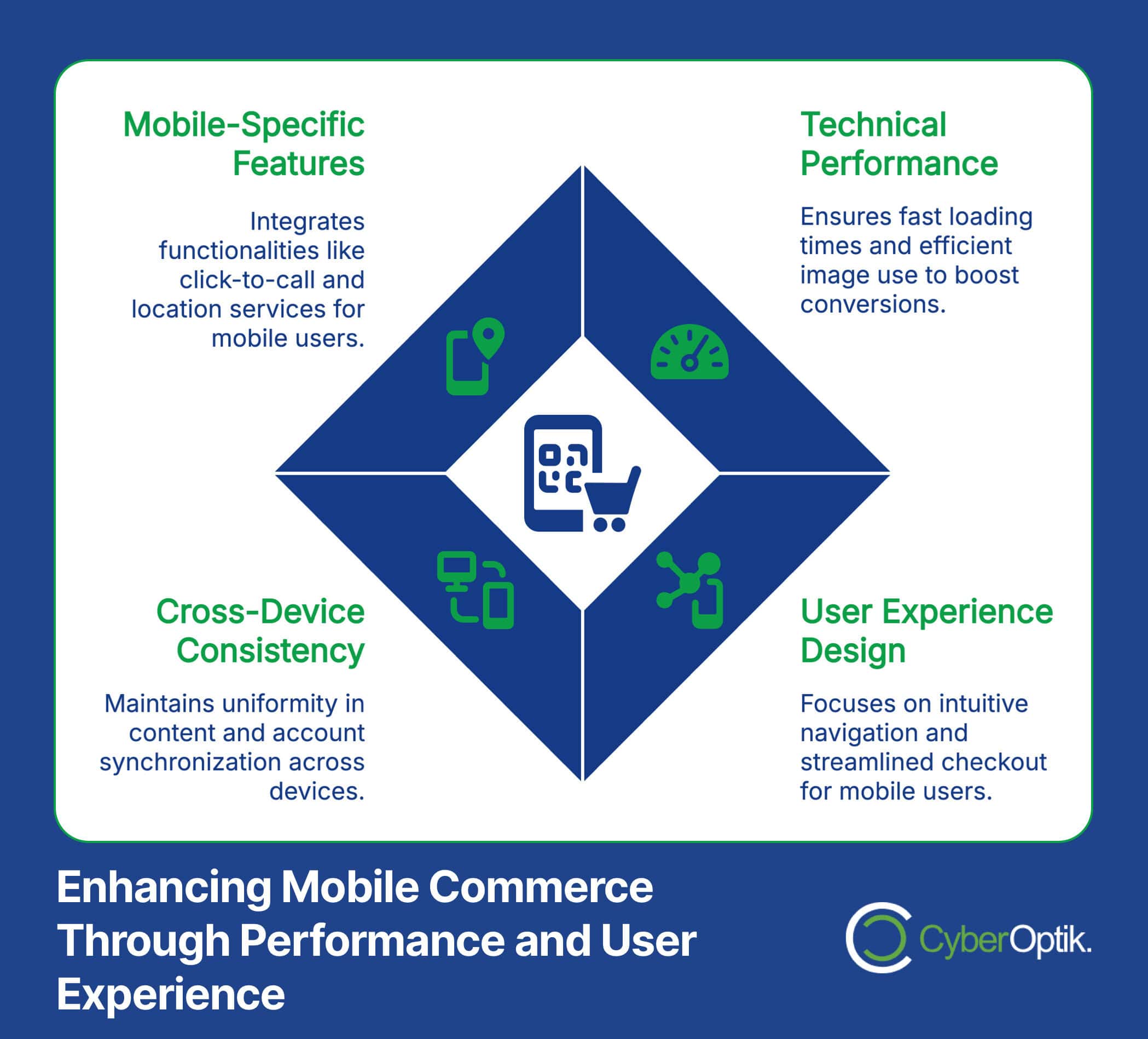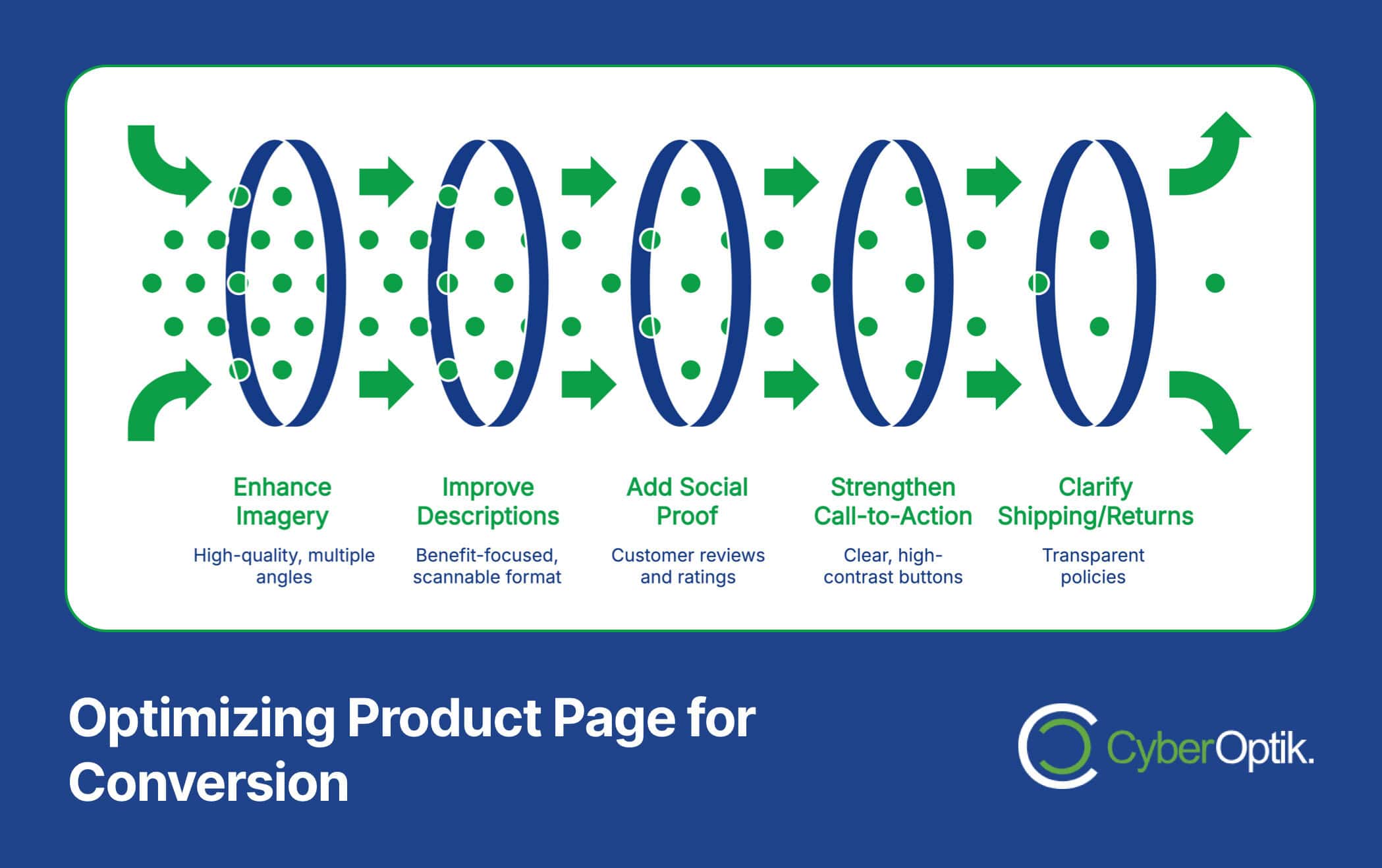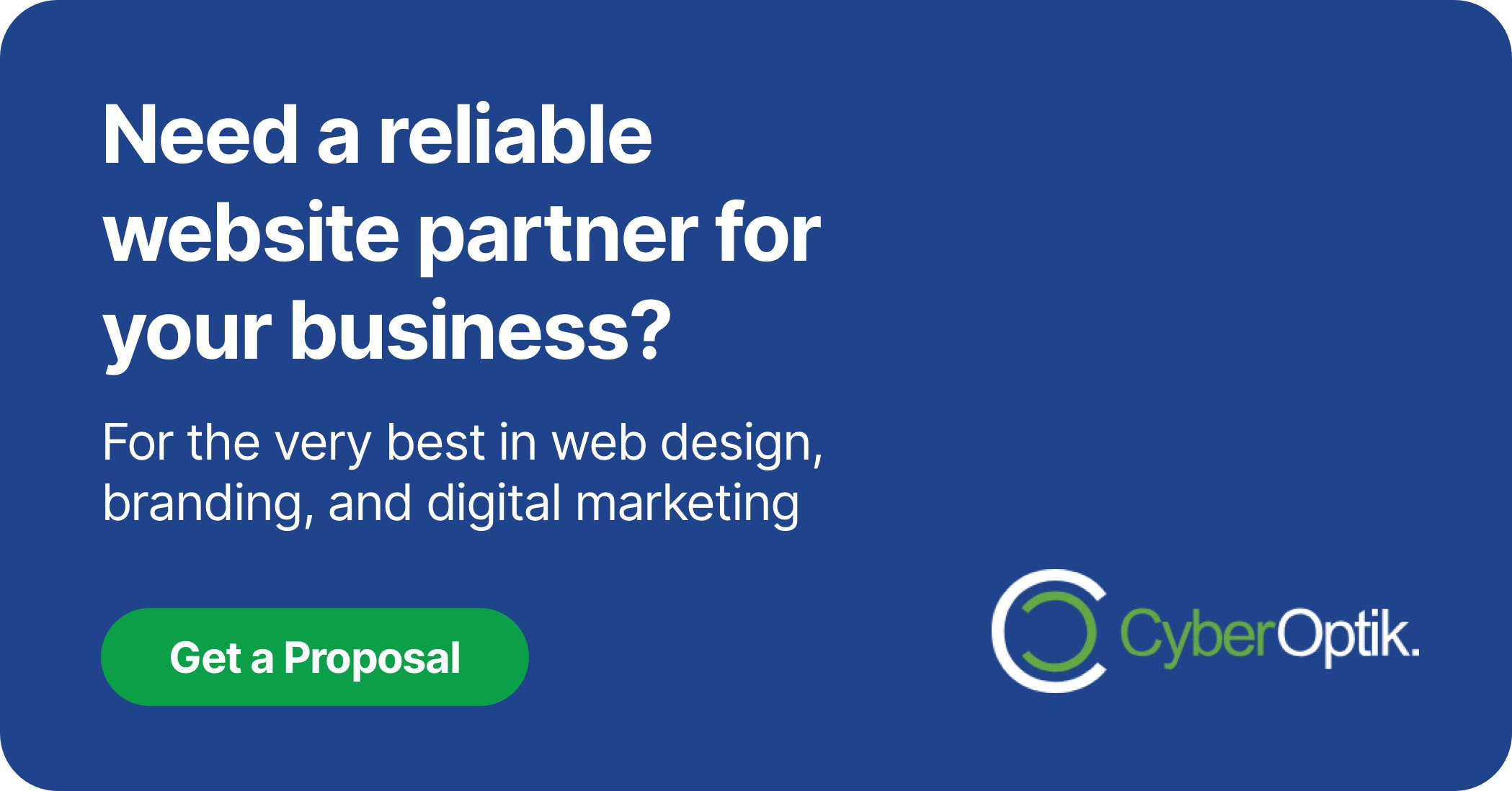The ecommerce landscape continues to evolve at a rapid pace. With global ecommerce sales projected to reach $8.1 trillion by 2026, the opportunity for online retailers has never been greater. (Source: Digital Minds BPO)
Yet many business owners struggle to capitalize on this growth. In our work with Chicago businesses, we see companies investing in ecommerce platforms that aren’t optimized for conversions or sales growth. The result? Wasted budget and missed opportunities.
This guide explores proven marketing strategies that can transform your ecommerce performance. We’ll share practical approaches based on current data and best practices for increasing traffic, boosting conversion rates, and building customer loyalty.
Understanding the Current Ecommerce Industry
The ecommerce sector has transformed dramatically. Today’s online shoppers expect seamless experiences across all devices and touchpoints. They want personalization, convenience, and transparency.
A critical shift in recent years has been the dominance of mobile commerce. Currently, 70% of shoppers use smartphones for online shopping, making mobile optimization essential for success. (Source: Hostinger)
Understanding industry benchmarks helps set realistic goals for your store. The average conversion rate across ecommerce sites hovers around 2.8% for both desktop and mobile devices. This figure serves as a baseline for measuring your performance. (Source: InvesPro)
| Ecommerce Metric | Current Benchmark | Strategic Implication |
|---|---|---|
| Global Ecommerce Growth | Reaching $8.1T by 2026 | Expanding opportunity for all retailers |
| Average Conversion Rate | 2.8% (Desktop & Mobile) | Baseline for performance measurement |
| Mobile Shopping Adoption | 70% of shoppers | Mobile optimization is non-negotiable |
| Cart Abandonment Rate | 70.19% across retail | Significant recovery opportunity exists |
The table above highlights key metrics shaping ecommerce strategy decisions today. Knowing these benchmarks helps prioritize your marketing efforts and identify the highest-value opportunities.
Mobile-First and Omnichannel Strategies
Mobile commerce dominates online retail. In 2024, mobile commerce accounts for a staggering $542.73 billion in US retail sales, making it impossible to ignore in your marketing strategy. (Source: BizPlanr)
We see this firsthand with our ecommerce clients. Stores that prioritize mobile user experience consistently outperform those that treat mobile as an afterthought. This approach requires thinking beyond mere responsiveness to creating truly mobile-optimized shopping journeys.
Poor mobile experiences drive customers away permanently. Research shows 62% of consumers abandon brands completely after poor mobile experiences, highlighting the long-term impact of subpar mobile design. The cost of neglecting mobile optimization extends far beyond a single lost sale. (Source: Shopify)
Key Components of Mobile-First Ecommerce
Effective mobile commerce strategies focus on both technical performance and user experience design. Speed matters tremendously on mobile devices, particularly for shoppers on cellular connections or in areas with spotty coverage.
- Lightning-fast page loads – Every 100ms delay in load time can reduce conversion rates by 7%
- Simplified navigation – Thumb-friendly menus and intuitive category structures
- Streamlined checkout – Minimal steps and mobile payment options
- Properly sized elements – Buttons, forms, and text optimized for touch interfaces
- Compressed images – Balanced for quality and performance
The impact of mobile optimization extends beyond phones. Customers expect consistent experiences as they switch between devices throughout their buying journey. This omnichannel approach recognizes that shoppers might research on mobile but purchase on desktop—or vice versa.

Optimizing for Conversion Rate Success
Cart abandonment represents a massive opportunity for ecommerce businesses. Currently, the average cart abandonment rate in retail stands at 70.19%, meaning more than two-thirds of shoppers leave without completing their purchase. (Source: ConvertCart)

Conversion rate optimization (CRO) directly addresses this challenge. Rather than simply driving more traffic, CRO focuses on converting existing visitors into customers through systematic improvements to your conversion funnel.
Social proof significantly influences purchase decisions. Studies indicate that social proof, such as reviews and testimonials, influences 41% of purchase decisions in ecommerce. Highlighting customer feedback can therefore dramatically improve conversion rates. (Source: WebFX)
Essential Elements of High-Converting Product Pages
The product page serves as the critical conversion point for most ecommerce stores. Small improvements here can yield significant results across your entire catalog. We’ve found that focusing on these elements consistently improves performance:
| Product Page Element | Optimization Approach | Optimization Approach |
|---|---|---|
| Product Images | Multiple high-quality images from different angles | Multiple high-quality images from different angles |
| Product Descriptions | Benefit-focused with complete specifications | Benefit-focused with complete specifications |
| Social Proof | Customer reviews, ratings, and usage numbers | Customer reviews, ratings, and usage numbers |
| Call-to-Action | High-contrast, clear buttons with action-oriented text | High-contrast, clear buttons with action-oriented text |
| Shipping/Returns | Clear, upfront policies with delivery estimates | Clear, upfront policies with delivery estimates |
This table outlines the core elements that influence customer purchase decisions on product pages. Implementing these optimizations provides a solid foundation for CRO success.
Email Marketing Campaigns that Drive Sales
Email marketing delivers exceptional ROI for ecommerce businesses. For every $1 spent on email marketing, businesses earn $40 in return—a remarkable 3,900% ROI that outperforms most other marketing channels. (Source: ConvertCart)
This high return makes email marketing essential for ecommerce success. The key lies in targeting the right messages to the right segments at the right time. Generic mass emails rarely perform well in today’s personalization-focused environment.
Cart abandonment emails offer a particularly powerful opportunity. These automated messages achieve an impressive 44.76% open rate and 23.33% click-through rate, significantly outperforming standard promotional emails. Implementing these recovery campaigns should be a priority for any ecommerce business. (Source: Mailmodo)
High-Impact Email Marketing Campaigns for Ecommerce
Strategic email campaigns can drive revenue throughout the customer lifecycle. From acquisition to retention, targeted emails support key business objectives and build stronger customer relationships.
| Email Campaign Type | Timing/Trigger | Content Focus | Performance Metrics |
|---|---|---|---|
| Welcome Series | Immediately after signup | Brand introduction, first purchase incentive | 25-40% open rate |
| Abandoned Cart | 1-24 hours after abandonment | Cart contents reminder, potential discount | 44.76% open rate, 23.33% CTR |
| Post-Purchase | After delivery | Usage tips, review requests, related products | 30-40% open rate |
| Re-engagement | 30-90 days after last interaction | What's new, special offers for returning | 12-15% open rate |
| Upsell/Cross-sell | Based on previous purchases | Complementary products, upgrades | 9.16% conversion rate |
The table above presents key email campaign types every ecommerce store should implement. Each campaign type targets a specific stage in the customer journey and addresses particular objectives.
Leveraging Paid Advertising for Ecommerce Growth
Paid advertising offers unmatched speed and targeting for ecommerce businesses seeking immediate traffic and sales. Unlike organic methods that take months to show results, paid campaigns can deliver customers within hours of launching.
Google Ads remains particularly effective for ecommerce. Data shows the average paid search conversion rate for Google Ads is approximately 4.8%, significantly higher than average organic conversion rates. This makes it a powerful channel for direct response marketing. (Source: Statista)
Successful paid advertising requires a strategic approach. Many businesses waste budget on poorly targeted campaigns or fail to optimize for conversions. We recommend following these essential practices for ecommerce PPC:
- Product feed optimization – Ensure complete, accurate product data with compelling titles and descriptions
- Audience segmentation – Create campaigns for different customer types and purchase intents
- Remarketing implementation – Target previous visitors and cart abandoners with specific messages
- Regular testing – Continuously test creative elements, landing pages, and bidding strategies
The most effective ecommerce advertising strategies integrate multiple channels. This comprehensive approach allows you to reach customers at different stages of their buying journey with the most appropriate message for that moment.
Building Customer Loyalty and Retention
Customer retention drives profitability in ecommerce. Acquiring new customers typically costs 5-7 times more than retaining existing ones, making retention strategies essential for sustainable growth.
Subscription models effectively boost retention rates. Research shows that subscription-based ecommerce models retain 42% of customers for a year or longer, compared to just 1% for non-subscription approaches. This dramatic difference highlights the value of recurring revenue models. (Source: Toptal)
Customer service plays a crucial role in retention. Today, 47% of customers actively seek live chat assistance when shopping online, emphasizing the importance of responsive support options throughout the buying journey. (Source: Hostinger)
Loyalty Program Structure for Ecommerce
Effective loyalty programs encourage repeat purchases and increase customer lifetime value. When designing your program, consider both the reward structure and the customer experience. The best programs feel valuable without being overly complicated.
| Loyalty Program Type | How It Works | Best For | Implementation Complexity |
|---|---|---|---|
| Points System | Customers earn points per dollar spent, redeemable for discounts | Stores with frequent purchases | Medium |
| Tiered Program | Different benefit levels based on spending or purchase frequency | Premium products, higher AOV businesses | High |
| Subscription Club | Monthly fee for exclusive benefits, discounts, or products | Consumable products, premium services | Medium-High |
| Referral Program | Rewards for bringing new customers | Products with social sharing potential | Low-Medium |
This comparison helps identify the most appropriate loyalty structure based on your business model and customer purchase patterns. The right program type can significantly impact retention metrics.
Understanding Shipping and Pricing Psychology
Shipping costs significantly impact purchase decisions. Currently, 45% of online shoppers prioritize free shipping when making purchase decisions, making it one of the most powerful conversion tools available to ecommerce businesses. (Source: Shopify)
Hidden costs cause cart abandonment. Research confirms that 50% of shoppers abandon their carts due to extra costs such as shipping, taxes, and fees that appear during checkout rather than earlier in the shopping process. (Source: Statista)
These findings highlight the critical importance of transparent pricing in ecommerce. While free shipping may not be feasible for every order, being upfront about all costs early in the shopping process can significantly reduce abandonment rates and build trust with customers.
Effective Shipping Strategies for Ecommerce
Finding the right shipping approach requires balancing customer expectations with business realities. Consider these strategic options based on your product type, margins, and customer preferences:
- Free shipping threshold – Set a minimum order value that qualifies for free shipping
- Flat-rate shipping – Charge a single, predictable rate regardless of order size
- Free shipping for members – Offer free shipping as a loyalty program benefit
- Calculated shipping with transparency – Show accurate shipping costs early in the process
The right approach depends on your specific business model and customer expectations. Most successful ecommerce businesses test multiple strategies to find their optimal approach.
Implementing Your Ecommerce Marketing Strategy
Successful implementation requires a structured approach. Start by auditing your current performance against industry benchmarks to identify the most significant opportunities for improvement.
Creating a prioritized roadmap helps focus resources on high-impact initiatives. When working with our ecommerce clients, we recommend categorizing potential tactics based on implementation effort and expected impact.
Measurement frameworks ensure you track progress effectively. Set clear KPIs for each marketing initiative and establish regular review cycles to evaluate performance and make adjustments as needed.
Implementation Priority Matrix
This matrix helps prioritize marketing initiatives based on potential impact and implementation complexity. Focus first on high-impact, low-effort tactics to generate momentum for your strategy.
| Marketing Initiative | Implementation Effort | Potential Impact | Recommended Timeline |
|---|---|---|---|
| Abandoned Cart Email Campaign | Low-Medium | High | Immediate (0-30 days) |
| Mobile Site Speed Optimization | Medium | High | Priority (0-60 days) |
| Product Page CRO Improvements | Medium | High | Priority (0-60 days) |
| Google Shopping Campaign | Medium | Medium-High | Near-term (30-90 days) |
| Customer Loyalty Program | High | Medium-High | Medium-term (60-120 days) |
This prioritization approach ensures you focus on initiatives that will deliver the fastest ROI while building toward longer-term strategic goals.
Your Ecommerce Marketing Roadmap
The ecommerce landscape rewards businesses that implement comprehensive, data-driven marketing strategies. By focusing on mobile optimization, conversion rate improvements, effective email campaigns, and strategic paid advertising, you can create sustainable competitive advantages.
Start by addressing the fundamentals: ensure your site delivers excellent mobile experiences, implement abandoned cart recovery, and optimize your product pages for conversion. These initial steps often yield the quickest returns.
As web design and development experts, we understand the challenges of creating and optimizing ecommerce sites that actually drive sales, not just look good. The strategies outlined here reflect our experience helping businesses build high-performing online stores.
Ready to transform your ecommerce performance? Contact our team for a free consultation on how we can help implement these strategies for your specific business.




